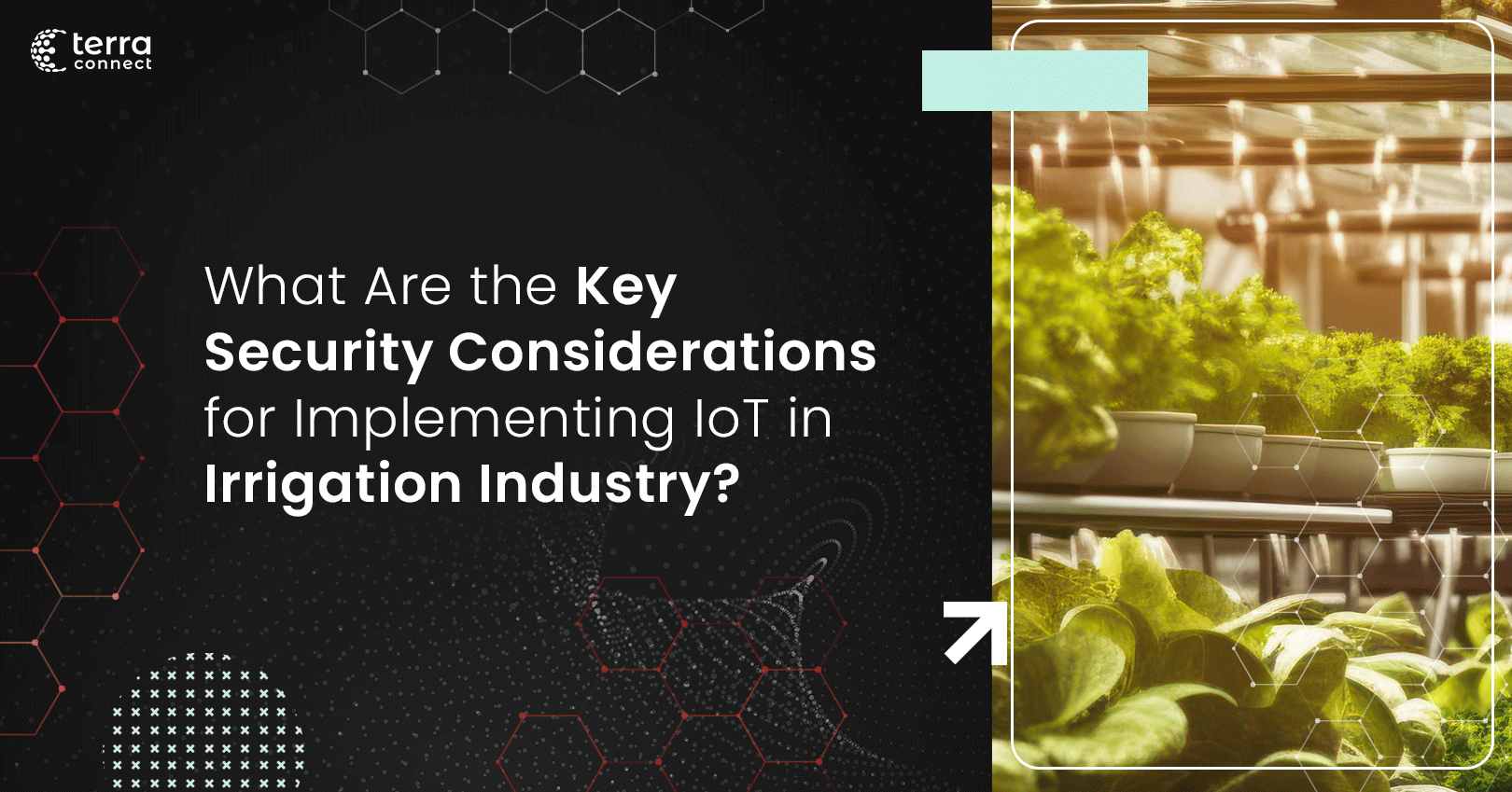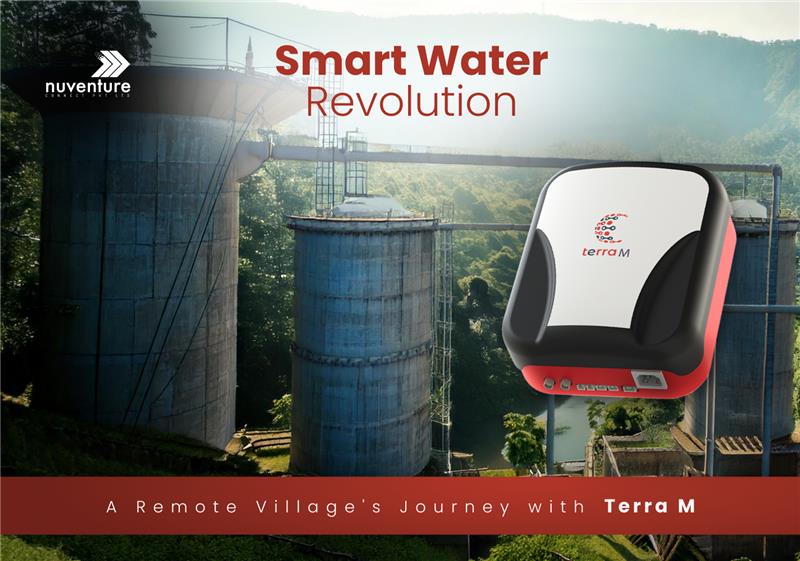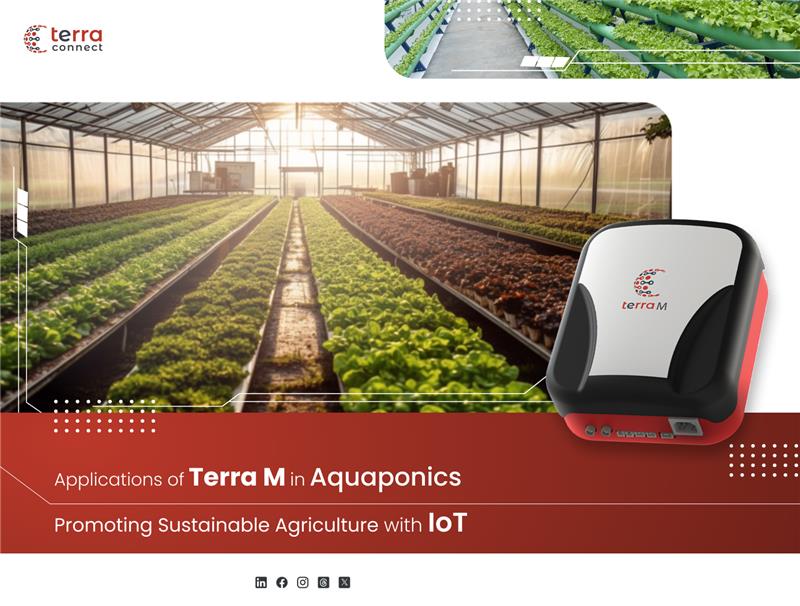
Prioritizing Security in Implementing IoT-Enhanced Irrigation Systems
When the world is experiencing population explosion, it becomes inevitable to increase the food supply to wrestle the demand. Agriculture 4.0 has been the sought-out solution, promoting the right collaboration of digital technology into agricultural fields. The fourth agricultural revolution, clasping hands with modern information technology, has promised a boosted harvest along with an ecologically sustainable agricultural economy.
Is IoT a Secure Methodology to Accelerate Farm-Produce
The engagement of IoT with agriculture, and its smart and precise applications have helped reduce physical threats due to unpredictable weather conditions. Precision farming with access to real-time data and insights, has helped farmers take the right decisions for efficient crop management.
However, the impact created by IoT in the irrigation systems is the most significant of all. An IoT-empowered, smart irrigation system ensures optimum usage of water resources. With minimum or zero human intervention, irrigation process is automated in such a way that only the required amount of water is made available to precise destinations. Thus, it helps preserve soil structure with ample nutrients, not compromising the growth-rate of the crops. Though IoT in agriculture is hailed for following the principle of optimal utilization of natural and capital resources to accelerate harvest potential, it has also been criticized for the encroachment of possible security-related vulnerabilities. The large amount of data generated because of increased connectivity of IoT devices also signifies possible data breaches. Ideally, Agriculture 4.0 should cater to the introduction of robust and efficient features to agricultural practices and ensure that the data generated is transferred and processed safely.
It is necessary to tackle the challenges posed by cyber threats on tech-savvy agricultural practices so that the farmers could explore the ceaseless possibilities bestowed by IoT.
How are the Benefits of IoT-Driven Irrigation Systems Menaced by Security Threats?
Though security measures are made stringent to mitigate cyber-attacks, new threats emerge in the form of end point attacks, phishing, crypto-jacking, cyber-physical attacks, and so on.
Here are a few ways in which the security of IoT integrated irrigation system is challenged
- More the data, more the danger:
Since multiple sensors are used in the agricultural fields for enhanced connectivity of IoT devices, large volume of data containing sensitive information on the operational details, soil-moisture level, nutrient-composition, crop yield is generated. It leaves a bigger chance for security threats on the networks and cloud space, storing sensitive data on agriculture.
- Unexpected attack against authenticity:
Though IoT devices are integrated with enhanced security features for authenticating the identity of the users, the possibility of a foreign attack cannot be declared null. The intensifying fascination for the dark net puts easy passwords and weak authentication systems at risk.
- Confronting physical threats of damage:
Most of the time, IoT devices are exposed to rough conditions in the agricultural fields. The delicate devices are open to chemical attacks from pesticides and fertilizers, besides the fatal exposure to mammoth agricultural machinery like tractors. External agents like animals and human beings may interfere with the smooth transmission of data, when they intentionally or unintentionally displace the devices that may not be protected using external cases. Damaged devices leave more gaps for security attacks, inviting risks.
- Tamper attacks:
It is an intentional attack where the IC in the IoT system is tampered with so that the data in the metal wires can be extracted using microprobes. The smooth running of the system can also be disrupted by altering the IC.
- Damage due to natural phenomenon:
IoT hardware on the agricultural fields, which are susceptible to changing weather conditions, bear the brunt of turbulent weather conditions like rain, lightning and snow. If the sensors on the devices, including the drones, are not resistant to unpredictable disturbances, it may not just lead to the physical damage of the devices, but also pose a threat to data leakage.
- IoT ransomware threat and the resulting financial loss:
Since most of the data from the IoT devices is stored in clouds, the damage done by attackers on the devices is comparatively less intense than the ones done on computers and smart phones. However, since the devices are interconnected using multiple sensors, any foreign entry using malicious software can result in targeted damage of the system. The attackers may focus on targeted strike by which the device cannot be placed in the same location, disrupting the entire connectivity.
- Damaging the convoluted infrastructure pertaining to agriculture:
Along with the invisible data networks from connected IoT devices, there would be connections for water supply, electricity, and pipelines for pesticide application in the agricultural fields. The IoT connectivity can be attacked indirectly by damaging this critical infrastructure in the fields.
- Attacks against privacy:
In agricultural fields, IoT devices capture data numerous times a day. The data not just comprises of the information on soil demographics, but also on the identity and position of the device. A skilled, unauthorized access can even encroach into the privacy of the farmer and the stakeholders.
- Threat to data integrity in the IoT system:
For efficient tracking and the smooth transmission of data between heterogenous devices, it is essential to operate based on data integrity. An attack on the integrity of the data by targeting the supply chain devices of IoT can disrupt the production, transmission and storage of critical information, creating loopholes for security breaches.
- Cyber-agroterrorism:
This type of terrorism aims at damaging the agricultural environment or the crop yield using cyber resources. Since the damage is done to the physical environment using a cyber resource, the resultant loss would be irreversible.
A cybersecurity threat to IoT-integrated irrigation system can result in financial losses because of disruption in integrated agricultural procedures. However, the most significant drawback is the resultant non-compliance of regulatory requirements pertaining to data protection and food security. Such legal complications call for the necessity of enhanced security considerations while implementing IoT-enhanced irrigation system.
Steps to Consider for Enhancing Security Measures in IoT-Integrated Irrigation System
Since IoT has been hailed for its applicability in multiple industries, intense research is being conducted on enhancing the security features associated with it, especially in the field of technology-assisted agriculture. Below are a few measures to consider while implementing a safe and secure IoT-integrated irrigation system.
- Safeguard privacy using LDPA solution:
Lightweight Directory Access Protocol (LDPA), a protocol used for authentication and authorization consists of three cryptographic techniques:
- The homomorphic Paillier encryption
- Chinese Remainder Theorem
- The one-way hash chains
The homomorphic Paillier encrypts data from every sensor of the IoT network. The Chinese Remainder Theorem acts as the moderator, for computing the mean and variance of the data aggregated from various IoT devices and sharing it the control center. The one-way hash chain technique aids in lightweight authentication among IoT devices. Together, the three techniques contribute to enhanced security. With the one-way hash chain technology, LDPA solution can prevent false injection of
data as the technique is adapted with the time slot during the authentication phase of fog computing devices and IoT devices.
- Boost role-based security:
Cyber threats can be minimized primarily by implementing Role Based Access Control (RBAC). With the perception of limiting permissions to users based on role, the user privileges can be audited easily, and any encroachment could be detected. Thus, an efficient control strategy by the IoT partner can help farmers comply with data regulations.
- Data encryption using PKI:
Public Key Infrastructure (PKI) is used for securing connections between IoT devices. These tools are used to manage public keys for encryption, securing the data transmission through the internet. Implementing the PKI infrastructure in the supply chain of IoT devices using Pass-Through Authentication that demands validation of passwords boosts the security standards of the system. Besides, it is necessary to incorporate encrypted security layers in the IoT devices while they are developed. This acts as a precautionary measure and helps save costs by avoiding future hardware alterations.
- Timely upgradation of software and firmware:
It is mandatory to upgrade firmware embedded to the IoT devices and the software running the whole system on a timely basis to ensure that there are no loopholes for security breaches. It is also important to use secure communication protocols such as MQTT (Message Queuing Telemetry Transport) or HTTPS (Hypertext Transfer Protocol Secure) while transferring data within the IoT devices.
- Installation of IDPS:
Intrusion Detection and Prevention Systems (IDPS) is a monitoring network that predicts possible threats and attacks to the administrator, compelling the IoT solutions partner to provide timely solution to prevent the security attack. A real-time analysis of the data generated by IDPS can act as an ideal security measure to mitigate any attack from network traffic on the agricultural fields.
- Confirm physical security of IoT devices:
This is the basic and rational level of protection provided to the IoT devices exposed in an external environment like agricultural fields. To prevent theft and tampering, digital fingerprint-enabled locks can be used. Besides, access control can be introduced at multiple levels of entry so that unauthorized access is discouraged.
- Supervise critical infrastructure in fields:
For cost-effective and secure IoT-enhanced irrigation systems, it is necessary to assess the functioning of the electricity and water supply regularly so that any wear and tear can be detected at the earliest and resolved. Besides confirming security leakages, this also ensures that there is optimal utilization of resources without wastage.
- Adhere to data regulations and standards:
IoT devices often use Personally Identifiable Information (PII) to confirm user access. The IoT solutions partner can anonymize this data to prevent small-level security attacks. There are various techniques to mask the PII. A few of them are scrambling, substitution, shuffling, date aging and variance.
- Guard against external agents:
Unintentional attacks by animals and humans on the IoT devices can be prevented by building an efficient fence around the farm. Monitoring animal and human trespassing can also add to the security standards of IoT enhanced irrigation systems.
Unlock the Future of Technology-Assisted Farming:
The world is looking ahead to witnessing the ceaseless potential of IoT-supported agricultural fields. With less human intervention and optimal utilization of resources, IoT-enhanced irrigation systems can ensure eco-conscious and economical solutions, maximizing crop yield. However, the minor pitfall raised by security threats is a major reason why many refrain from collaborating with IoT-supported irrigation systems. Therefore, just like contributing towards the progressive IoT capabilities in agriculture, it is also necessary to promote research on raising security standards assured by IoT technology.
TerraConnect is a predominant IoT-solutions partner, specially focusing on revolutionizing the agricultural sector with IoT innovations. Approach us for secure and cost-effective integration of IoT into your green spaces. https://terraconnect.io/agriculture/
Categories
Recent Articles

The Future of Water Management: TerraConnect Launches Terra M and Terra S in Kochi
Chaithanya

Experiencing the Future of Pool Management with Terra S
Chaithanya

The Smart Water Revolution: A Remote Village’s Journey with Terra M
Chaithanya
